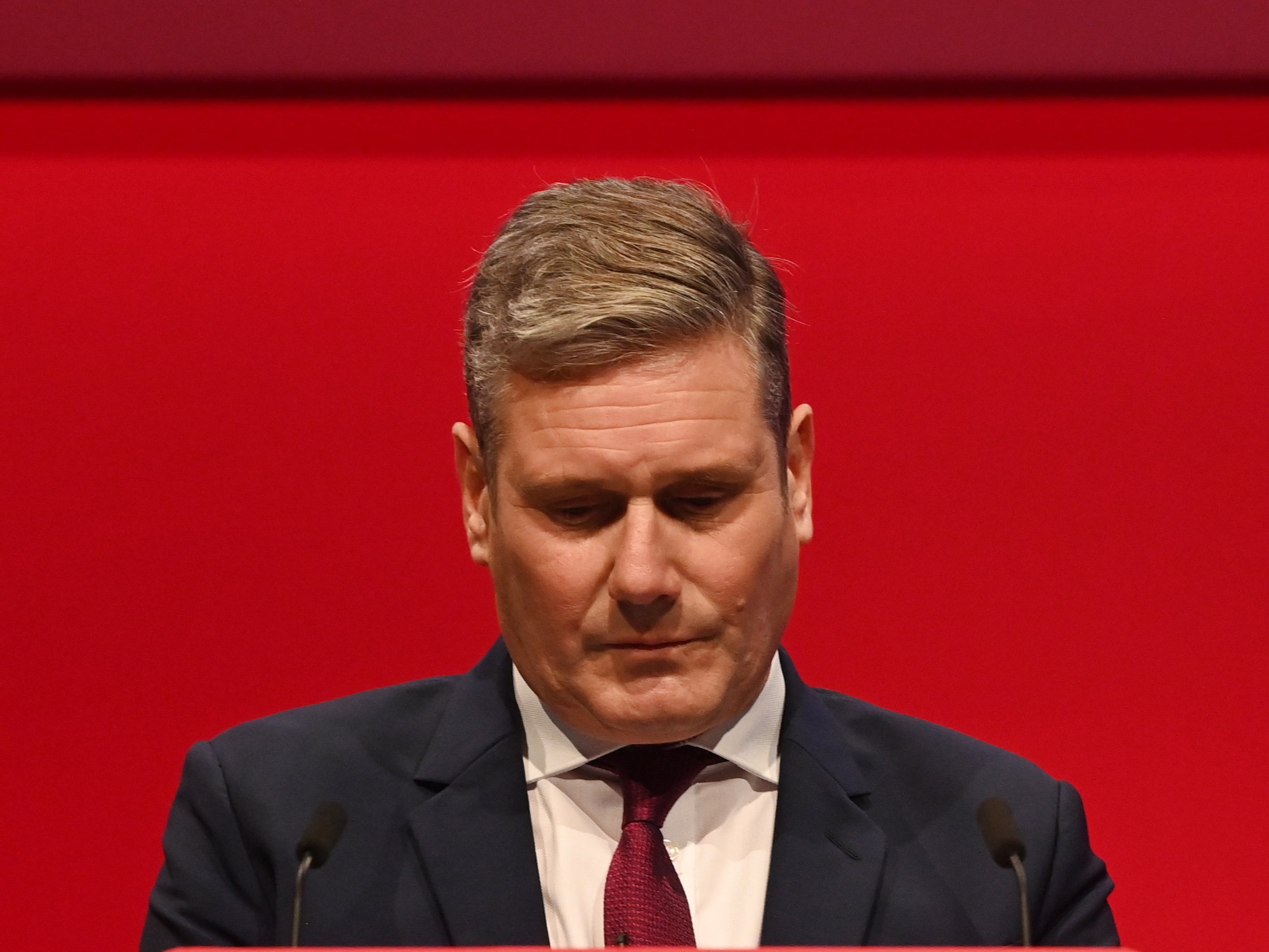The government’s embroiled in a series of crises – so why can’t Labour land a punch?
The government has lurched from crisis to crisis and yet, somehow, the Tories remain 10 points clear in the polls. Sean O’Grady explains how that’s possible


If some ghostly Dickensian apparition from the autumn of 2021 had visited Boris Johnson at Christmas 2019, just after he had won a thumping 80-seat majority at the general election, and told him what the next couple of years had in store for him then he’d have been rightly concerned for his political, and personal, future. A pandemic that would take the lives of more than 135,000 people in the UK (nearly including the prime minister); a simultaneous energy, cost of living and fuel crisis; the disgrace, eventual resignation and subsequent betrayal of his closest adviser; a severe economic slump followed by an uncertain economy; a string of high-profile scandals and ministerial resignations; Brexit going a bit awry; disappointing by-election results; incipient inflation; and the highest taxation and debt burden in postwar history – surely his party would be deeply unpopular, and he himself facing a leadership challenge?
Seems not. According to the latest YouGov poll, in line with recent trends, the Conservatives still enjoy a 10-point lead over Labour – a honeymoon level of support under nightmare conditions, and after more than a decade of various Conservative or Conservative-dominated administrations, austerity and all. At 41 per cent, they have slipped only a couple of percentage points from their December 2019 showing, when they “whacked Corbyn”, in the words of the prime minister. By contrast, Labour are stuck at a touch below the 32 per cent they registered then. The Liberal Democrats and the Greens split the third party vote neatly, at 9 and 8 per cent respectively, and also pose little threat to the Tory majority if an election were held now. Only the SNP, firmly in power north of the border, pose anything like a challenge to the Tory hegemony. If the lead sustains until the next election in 2023 or 2024, and another four- or five-year term follows, then the Conservatives will have been in power continuously for just about two decades, and Johnson will be approaching the longevity at the top of Tony Blair and Margaret Thatcher. He has no shortage of rivals and detractors in his own party, but they cannot argue with such polling data.
Complicated as it all is, there are a few reasonably clear explanations for the present state of the parties.
First, the Conservatives have broadly been given the benefit of the doubt for their handling of the various crises. The only sort of developments that seem to have a dramatic effect on voting intentions are egregious cases of personally reprehensible and hypocritical behaviour. It is striking how the otherwise quite different cases of Dominic Cummings and Matt Hancock caused such an immediate reaction, because both were seen to be breaking their own strict Covid rules. Such events, of their nature, cannot happen every week, and Johnson has now seen his most incompetent and questionable ministers leave the cabinet, as well as his former chief adviser. The claims of “sleaze” laid by Labour did have some traction, but the wheels appear to be slipping a bit now. The public also seem less concerned by the various scrapes that Johnson and Priti Patel have got themselves into, and aren’t even concerned about the financial or “access” stories that the media has feasted upon. Still, the “sleaze” issue is obviously potent, and it is a weakness in the Tories’ image.
Second, the opposition has failed to convince the public that the government has been uniquely bad in the way it has reacted to Covid or “got Brexit done” (or not). They seem still generously inclined to see world events as buffeting the British economy, and a fair proportion are also probably still personally invested in the Leave vote they cast back in 2016, and inclined to put the best gloss on developments and, if needs be, blame the French/Brussels, having also been well, primed to do so over decades of negative coverage by the press.
Third, the voters seem unready to trust Labour or its leader. That is not to say that Jeremy Corbyn or Rebecca Long-Bailey or Andy Burnham, say, would be thrashing the Tories right now. Indeed, that does feel implausible. As during periods throughout Labour’s long electorally desolate past, the public might take the view that the Labour leader himself is competent and serious, but that his party as a whole is anything but. The scenes from the leader’s speech at the Brighton conference, a thoughtful speech heckled by ranting leftists, confirm the impression that Labour’s policies are not yet fully cognisant with those of large swathes of their traditional electorate. No doubt the government’s often confected “culture wars” have reinforced this sense of alienation from the socially conservative working classes.
It certainly feels a very long time since a Labour leader, Tony Blair in fact, could declare with confidence that New Labour was “the political wing of the British people”. The Johnson administration, unashamedly populist, seems closer to that level of intimacy with folk and, by looking and sounding different to the Cameron and May administrations (rarely mentioned, let alone praised), it almost feels as though Johnson has copied some of Blair’s techniques and repositioned his party, albeit informally, as “New Conservative”. Maybe the 10-point lead isn’t such a shocker.
Join our commenting forum
Join thought-provoking conversations, follow other Independent readers and see their replies
Comments